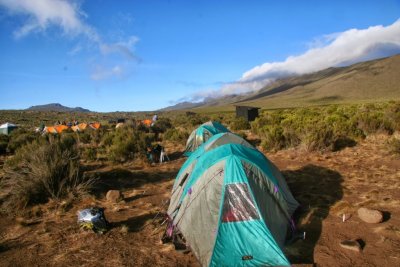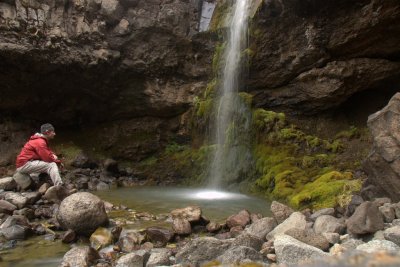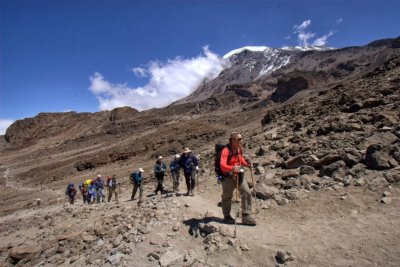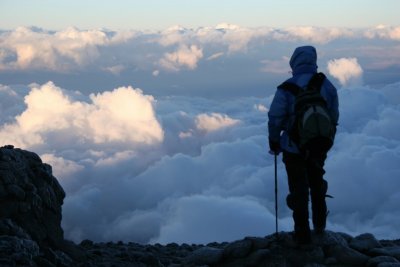Scharks to give talk on Kilimanjaro climbs Dec. 4
Tim Scharks, a senior lecturer of geography and environmental studies at Western Washington University, will give a presentation on climbing Mt. Kilimanjaro, Africa's highest peak, at 7 p.m. Wednesday, Dec. 4, at Backcountry Essentials in downtown Bellingham.
The presentation is a preview of trips Scharks will be leading next year as part of the new Global Discovery community travel program.
Kilimanjaro’s mystique beckons adventure seekers from around the world. The 19,341-foot high summit is a serious altitude challenge, yet a non-technical trail to the top presents one of the most attainable of the “seven summits” — the highest points on each of the seven continents.
In his presentation, Scharks will share stories and images from six trips to the summit of Kilimanjaro and the remarkable landscapes of northern Tanzania. The presentation is different from a standard travelogue in that Scharks will share his advice on how to prepare and pack for a trip to climb Kilimanjaro as well as provide background on the region's fascinating culture and economy.
Also included in the presentation are pictures from safari in Serengeti, Ngorongoro and other wildlife areas of northern Tanzania.
Global Discovery participants will travel from July 5 to 19, 2014. The centerpiece of the trip is an eight-day trek attempting the summit of 19,341-foot tall Mt. Kilimanjaro, followed by an optional five-day safari extension to Serengeti National Park and Ngorongoro Crater. The Global Discovery group will take the Lemosho Glades route up Mt. Kilimanjaro, which is the longest and most scenic route to the top. This route will allow for a focus on the mountain’s ecology and geology.
Scharks’ other trip to Tanzania is scheduled for July 14 to 26; on that trip participants will visit the legendary Serengeti National Park, home to wildebeest, zebra and gazelle. Participants will also engage with several Tanzanian tribes like the Maasai pastoralists of the Crater Highlands and Rift Valley system and the Chagga people of Kilimanjaro.
Global Discovery trips are non-credit and offer an opportunity for people to travel with Western faculty and immerse themselves in another culture.
Other Global Discovery trips include a two-week tour of historic towns and scenic countryside in Italy from Aug. 31 to Sept. 14 led by Western Faculty Gigi Berardi and Jim Allaway. The trip will emphasize the vibrant contemporary food culture of Italy, and will include language instruction and hands-on classes in Italian cooking. During various excursions participants will learn more about Berardi's research in food and culture and the importance of minerals, sun, and Mediterranean fats in the diet.
Scharks was raised in the mountains around Bellingham, guiding in the North Cascades and internationally. He now teaches environmental policy and geography at Western and leads WWU study abroad classes in Tanzania. He is leading two WWU Global Discovery tours to Tanzania in the summer of 2014: a Kilimanjaro climb with a Serengeti safari and a longer safari plus cultural tourism program.
Admission to the Dec. 4 presentation is free, with donations suggested to the Kilimanjaro Porters Assistance Project; donations will purchase entry in a raffle for a framed photo.
Backcountry Essentials is located at 214 W. Holly St. in Bellingham. For more information about Western’s Global Discovery community travel programs, visit www.wwu.edu/GlobalDiscovery, email globaldiscovery@wwu.edu or call 360-650-6409.



